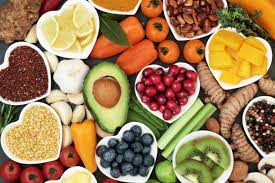Web Desk
The benchmark for world food commodity prices declined marginally in August, as decreases in quotations for sugar, meat and cereals outweighed increases in those for vegetable oils and dairy products, reports Food and Agriculture Organization (FAO).
The FAO Food Price Index, which tracks monthly changes in the international prices of a set of globally-traded food commodities, averaged 120.7 points in August, slightly down from its revised July figure and 1.1 percent below its corresponding value in August 2023.
The FAO Cereal Price Index dropped by 0.5 percent from July, driven by lower global wheat export prices amid competitively priced Black Sea supplies and higher-than-expected production in Argentina and the United States of America. Meantime, world maize prices firmed slightly, reflecting the impact of heatwaves on yields in parts of Europe and North America, while the FAO All-Rice Price Index increased by 0.6 percent, as quotations for non-Indica varieties increased under the influence of seasonal tightness and currency appreciations of some exporting countries against the United States dollar.
The FAO Vegetable Oil Price Index rose by 0.8 percent from July to reach a 20-month high, as increases in international palm oil prices more than offset declining quotations for soy, sunflower and rapeseed oils.
The FAO Dairy Price Index also rose, increasing 2.2 percent in August. Whole milk powder increased, driven by a surge in import demand for spot supplies. International cheese prices also climbed due to higher global import demand, while international butter quotations reached an all-time high fueled by increased uncertainty over the adequacy of milk supplies in Western Europe.
The FAO Meat Price Index declined by 0.7 percent from July, with poultry, pig, and ovine meat prices all down amid lackluster import demand, even as world bovine meat prices increased slightly.
The FAO Sugar Price Index declined by 4.7 percent in August to reach its lowest level since October 2022. The drop was underpinned by an improved production outlook for the upcoming sugarcane harvests in India and Thailand, as well as lower international crude oil prices. However, concerns about the impact of fires on sugarcane fields in key growing areas of Brazil led to sharp sugar price increases in late August.
FAO also trimmed its forecast for global cereal production in 2024, now pegging it at 2 851 million tonnes, almost on par with that of 2023.
The new Cereal Supply and Demand Brief attributed its revisions to reduced harvest expectations for coarse grains, including maize, primarily due to hot and dry weather conditions in the European Union, Mexico and Ukraine. Meanwhile, FAO has raised its forecast for global wheat output in 2024 as well as that for rice, which is now projected to reach an all-time high of 537 million tonnes.
World cereal total utilization in 2024/25 is forecast to rise to 2 852 million tonnes, marking a 0.2 percent rise from 2023/24. Utilization of rice is predicted to reach a record high, driven by an expected accelerated growth in the food intake component.
World cereal stocks are forecast to expand by 1.2 percent at the end of the 2025 seasons, yielding a global cereal stocks-to-use ratio in 2024/25 at 30.7 percent.
International trade in total cereals is now pegged at 485.6 million tonnes, representing a 3.3 percent decline from 2023/24, led mostly by lower traded volumes in coarse grains.















